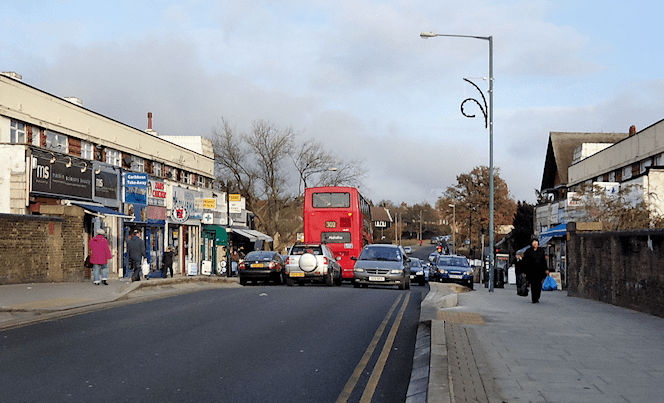Population 587,172 Dialling code 020 | OS grid reference TQ205915 Sovereign state United Kingdom | |
 | ||
Pepe s piri piri burnt oak edgware amazing five star review by sophie
Burnt Oak is a suburb in the Edgware district of North London. It is situated in the London Borough of Barnet.
Contents
- Pepe s piri piri burnt oak edgware amazing five star review by sophie
- Map of Burnt Oak Edgware UK
- Gr8drive car driving classes in burnt oak ha8 call 07791 674 839
- History
- Watling Estate
- Demography
- Transport
- References
Map of Burnt Oak, Edgware, UK
Gr8drive car driving classes in burnt oak ha8 call 07791 674 839
History
The name Burnt Oak was first used in 1754 and from then until the 1850s referred to no more than a field on the eastern side of the Edgware Road (Watling Street). Nor is there evidence that the name implies anything except that the field had once contained a burnt oak tree. In May 1844 Burnt Oak field was sold to a Mr Essex, and by the 1860s plans were in place to build three residential streets: North Street, East Street, and South Street. The application of the field name to the area seems to have followed from this new estate and was in use by the end of the 19th century. However, the area was generally known as Red Hill until the opening of Burnt Oak tube station.
There were a handful of shops by the 1890s. There was a post office and grocery run by George and William Plumb, a bakery run by Caller & Poole, as well as James Huggett the greengrocer. A tramway along the Edgware Road to Cricklewood opened in 1905, but the population remained small, by 1921 still only around 1,000.
Burnt Oak tube station on the Northern line of London Underground was opened on 27 October 1924. It was first open on weekdays with a small booking hall suitable for a rural area. As it was on farmland south-east of the community in Edgware Road, London Transport constructed a new road, Watling Avenue. In the same year news leaked out that the London County Council was to build a housing estate (Watling Estate), which was ready for its first occupants in April 1927. With this and other private estates the area was provided with a new station by 1928, and the population by 1931 had grown to 21,545. Along both sides of Watling Avenue shops were built along with a number of schools to serve the area, such as Woodcroft and Goldbeaters.
In September 1931 Jack Cohen opened the first Tesco store Tesco at 54 Watling Street, Burnt Oak. This first Tesco shop was not on the site of the present Tesco on Burnt Oak Broadway, but in smaller premises round the corner on Watling Avenue (now a Savers).
In 1930, Dominican nuns established St Rose's Convent on Orange Hill Road which led to the foundation of St James' Catholic High School in 1934. In 1936 Watling Market opened with a hundred covered shops and stalls, and the Co-op opened its department store at the junction of Stag Lane and Burnt Oak Broadway (now a Peacocks).
Watling Estate
The Watling Estate was one of 12 London County Council cottage estates built between the wars to provide Homes fit for Heroes.
Demography
The area is known for its variety of multicultural shops, reflecting the established Indian, Turkish and Nigerian communities. It has recently also attracted a community of Eastern Europeans, mainly from Romania, Poland and Bulgaria.
The 2011 census showed that for the Burnt Oak ward in Barnet, 47% of the population was white (30% British, 14% Other, 3% Irish). 13% was Black African and 12% Other Asian. Religiously, 50% was Christian and 18% Muslim.
Transport
Burnt Oak is well served by buses. Routes 32, 114, 142, 204, 251, 292, 302, 305, and Unobus routes 614 and 644 all meet at the junction of Watling Avenue, Stag Lane and Burnt Oak Broadway. The old route 52 was split into a shorter 52 (between Willesden Junction and Victoria and new route 302 (from Mill Hill Broadway to Kensal Rise via Burnt Oak) in 1992. Night bus route N5 runs between Trafalgar Square and Edgware via Burnt Oak.
Northern Line trains on the Edgware Branch of the line serve Burnt Oak tube station.
